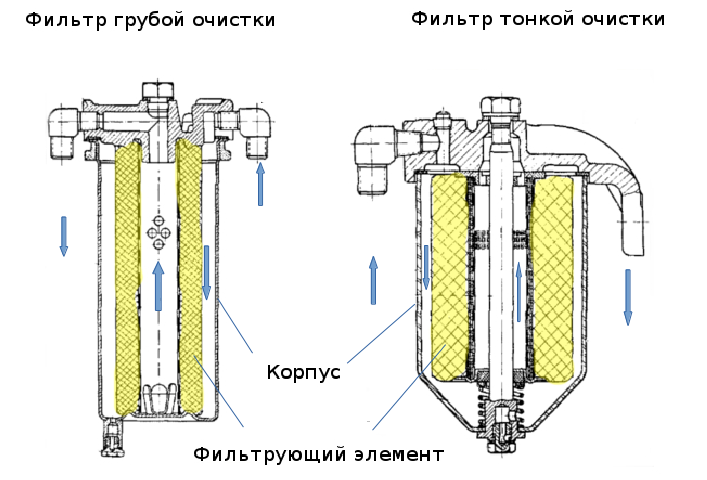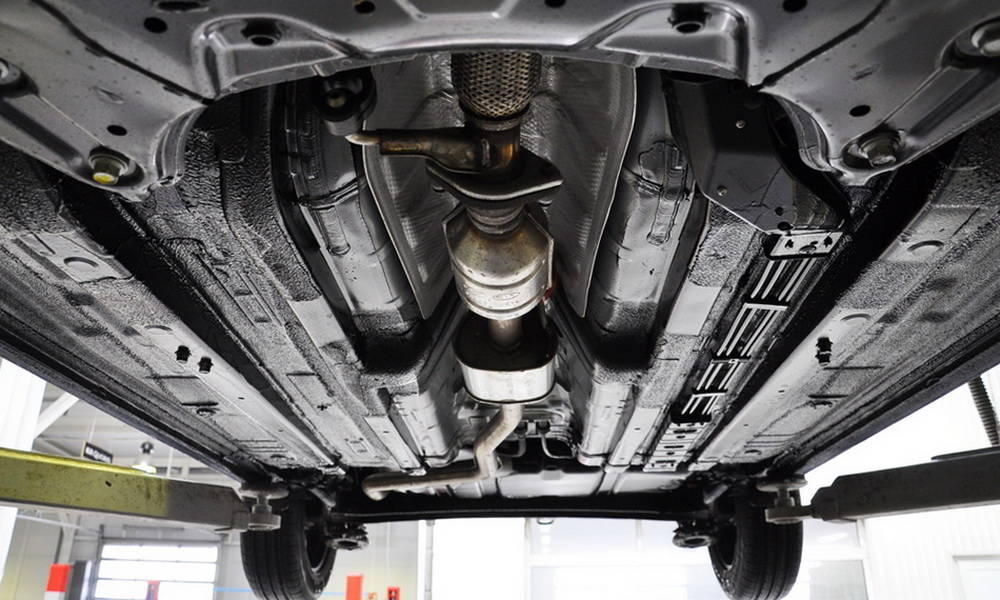
Anticorrosive agents for the treatment of the bottom of the car
Content
To increase the resistance of the body and accessories to corrosion, manufacturers treat the metal with a layer of zinc. Mechanical damage, moisture, dirt, acids and salts destroy the factory treatment a year after the start of the vehicle's operation. The most susceptible to corrosion are hidden hollow body cavities, bottoms, thresholds and tack points.
As an additional protection, sealing mastics and anti-corrosion compounds are used, which, depending on the place of processing, have types and classes. Consider which anticorrosive agent for the bottom of the car is better, as well as the properties of each composition and its advantages.
Advantages and disadvantages of the tool
Depending on which part of the body needs additional protection, a remedy is selected. Self-preservatives are used for interior work and protection of body cavities. Lubricating putties are suitable for exterior decoration, the material prevents the growth of corrosion and serves as an additional soundproofing of the cabin. The advantages of anti-corrosion agents, regardless of the order of application:
- Extending the life of the body metal.
- Painting of corrosion centers and creation of additional protection of the bottom from the outside.
- Possibility of processing independently.

The disadvantages of secondary protection include:
- Minimal effect with improper application and choice of material.
- The mask must be changed periodically.
- If there are pockets of rust on the metal, then you need to cook the body, anticorrosive will be useless.
- The complexity of self-application, it is necessary to use the production scheme if you want to treat the entire lower part of the car with anti-corrosion protection.
Automotive anticorrosive for various surfaces
Industrial and proprietary anti-corrosion compounds are made from polymers. Funding requirements also vary. The outer parts of the body are treated with putty for the bottom, and the inner surfaces are treated in 90% of cases with anti-corrosion paraffin, which is applied by brush or spray.
Anticorrosive agents for the treatment of internal surfaces
The internal parts of the hull include: the inner surface of the bottom, stringers, doors, door pillars. The metal is 90% hidden from the external factor by facing panels, but exposed to moisture, less often salt. Anti-corrosion agents for the treatment of the internal parts of the bottom meet the following requirements:
- Not aggressive to car paint, does not corrode paint, rubber, plastic.
- They have high elasticity. The composition should fill possible chips and cracks.
- They provide paint protection from electrolyte and moisture.
- They stop the corrosion process, completely preserving the oxide center.
It is not recommended to apply the product to obvious places of oxidation without first cleaning the body. The chemical film will protect the metal for a short time, up to 3-5 months, and the process of destruction of the body will continue.
Protective materials are made on the basis of paraffin or synthetic oil. The composition of the oil quickly penetrates into hidden cracks and cavities and covers the metal with a protective film. Manufacturers produce the product in aerosol cans or in liquid form, which must be applied to the surface in several layers.
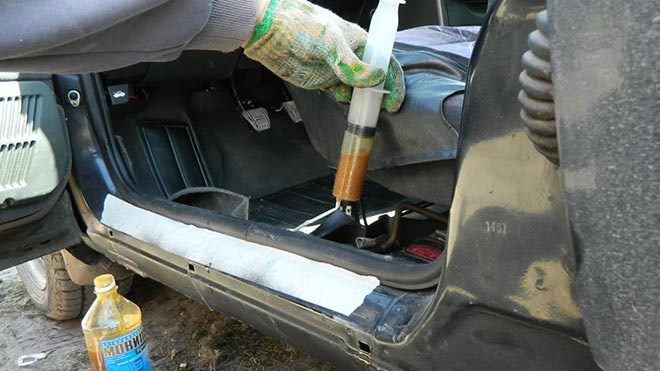
Paraffin-based anticorrosive agent is applied by brush or spray. The tool has a dense structure due to the composition of the wax, forms a protective film on the metal surface, which must be removed during processing. One of the disadvantages of paraffin products is the possibility of air entering when processing difficult areas, so corrosion will continue.
Anticorrosive coating for exterior surfaces
The outer surfaces of the body - the bottom of the car, sills, wheel arches must be treated with anti-corrosion agents, which include bituminous mastics and chemical compounds that slow down the growth of rust. Requirements for anti-corrosion compounds for external treatment:
- Material resistance to electrolytes, mechanical damage, acids and salts.
- Moisture resistance.
- High adhesion to damaged areas of the body.
- Partially elastic, the putty after drying should maintain a uniform structure, while covering the area with a durable film that is resistant to body deformation.
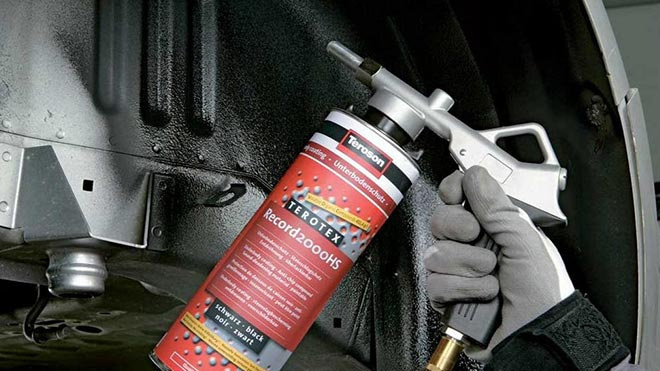
Many protective compounds are considered universal and are recommended by manufacturers for internal protection and external application to exposed panels.
Auto mechanics advise treating each body element with a separate tool suitable for specific operating conditions. For interior decoration - oil and paraffin-based sprays, bottoms and thresholds are treated with bituminous mastic, liquid plastic.
Selection criteria and requirements
Many drivers, choosing a budget segment model, carry out anti-corrosion treatment of the body in the first few months. This is justified when buying Chinese cars, some models of Renault, Chevrolet, etc.
See also: Secrets of the masters: how to choose and use anti-gravity
Recommendations when choosing:
- It is better to apply a liquid substance with a gun, choose homogeneous elastic compositions.
- Non-drying oil products treat the internal cavities of the body.
- The use of paraffin anti-corrosion agents will prevent moisture ingress and slow down the oxidation of body parts that have not undergone industrial galvanization.
- External processing of the bottom is made with bituminous mastic, PVC rubber, liquid plastic. Homogeneous compositions are selected. The machine must be mounted on a lift.
- All products have a limited shelf life.
- The average calculation of the amount of material for the outer part of the bottom: 1 liter of anticorrosive per 1 sq.m of surface.
Before choosing a means of anti-corrosion protection, it is necessary to check the condition of the metal and, if necessary, carry out repairs.
Rating of the best anti-corrosion agents
Among the large selection on the market, we offer a rating of popular anticorrosives, with current prices for the second half of 2019. The list will allow you to determine which putty for the bottom of the car is better and how much material is needed for a particular job.
DINITROL anti-rust series
The German manufacturer produces a number of protective agents, including bituminous mastics, oil sprays, and wax anticorrosive agents. In dealerships, in addition to original materials, self-treatment is carried out with a professional branded remedy.

DINITROL 479 based on synthetic rubber is used as a universal protection for exterior and interior surfaces. Does not contain aggressive components, does not corrode paint, plastic, rubber. It has low elasticity, is most often used for the bottom, thresholds, provides maximum sound insulation, is resistant to acid and salt solutions.
Anticorrosive has high adhesion rates, the maximum protection period is 2 years, the price in the Russian market - an aerosol can with a volume of 100 ml - from 170 rubles. Lower processing, 1 liter jar - from 700 rubles.
Anticorrosive for the bottom SUPRA-SHIELD
The Russian company produces a full range of materials for complete anti-corrosion protection of the body. The manufacturer insists on carrying out work in their centers, provides a guarantee of 1 year.
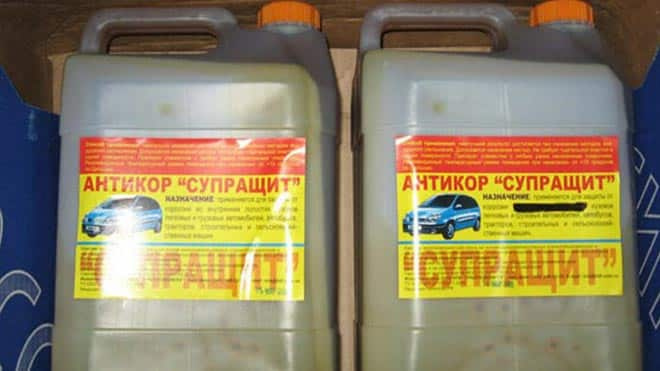
The composition of anticorrosives includes adhesive components that increase the area of adhesion of the material to the paint, viscosity stabilizers, anticoagulants. The composition repels water, forms a dense protective layer, does not collapse from mechanical influences. Suitable for self-treatment of the bottom of the car. The cost of a set of 10 liters 5 + 5 for the bottom and hidden cavities is 4500 rubles. Among the shortcomings, drivers note the unpleasant smell of the product, so it is necessary to wear a respirator when working.
Anticor PRIM
The Russian company Tekhpromsintez, together with the University of Munich, produces Prim anti-corrosion agents for the treatment of all car surfaces. Feature of production — the low price for the market of the Russian Federation. Protective compositions are packaged in aerosol cans and are intended for self-treatment of the body. Products are classified into:
- BODY FIRST. Anticorrosive for external processing of the bottom. The material forms a matte elastic film on the metal surface, has water-repellent properties, and is resistant to mechanical damage and the action of reagents. Apply by sprayer or brush.
- PRIMML. Means for protecting hidden cavities: stringers, door panels, etc. Quickly penetrates into microcracks, forms a microfilm. Anticorrosive is resistant to electrolytes, does not destroy paint, rubber, repels moisture. The price of a bottle in 1 liter is 1000 rubles.
Antikor NOVA
Anticorrosive firm Novax (RF) has the highest adhesion rates. The bottom is processed independently, the product is packaged in convenient aerosol cans, costing 200 rubles per 400 ml. Nova BiZinc contains a stabilizer, corrosion inhibitor, reinforcing filler, and can be used for rust spots that have already appeared.

As a standard, the surfaces of the body and bottom should be treated at an air temperature of 15 degrees, but Nova anticorrosive can be sprayed at a temperature of plus 5.
Antikor Kordon
A series of anti-corrosion agents from the company Polikom-Past (RF) consists of aerosol cans for internal processing and putty cans for external body protection. Bituminous mastics are applied with a brush, liquid materials are best sprayed with a pneumatic gun. The product is based on a polymer composition based on bitumen.
The advantage of Cordon anti-corrosion coating is the resistance of the film to mechanical damage and auto chemicals. Shelf life up to 14 months, then the coating must be renewed. Products belong to the budget segment, the cost of 1 kg of putty starts from 200 rubles.
Anticor HB BODY
The line of anti-corrosion agents from the Greek company HB has proven itself well. Body protection paint BODY is sold in kilogram cans. The anti-corrosion composition is made from a mixture of bitumen and rubber, due to the processing of the outer surface of the bottom, the sound insulation of the cabin is increased by 11%. Aerosol cans of 400 ml worth 290 rubles were used for self-repair.
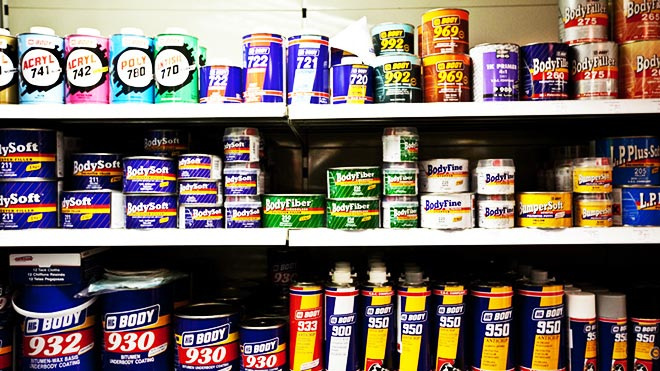
The average service life of the protection is 1,5 years. A feature of the composition remains the possibility of using the coating as an anti-gravel coating when processing wheel arches.
Anticorrosive agents for all surfaces RUST STOP
The RUST STOP line of anti-corrosion agents manufactured in Canada has the most differentiated specialization. Chemical preparations with various technical characteristics are produced for the treatment of outdoor, indoor and indoor spaces. Anticorrosives have a gel base, without a specific smell. Spray or brush application options available. After drying, the composition forms a protective film on the bottom, resistant to mechanical damage, resistant to reagents, acids and moisture. The price of 1 kg of funds is 1000 rubles.
See also: TOP 5 adhesives and sealants for gluing and restoring car windows
Underbody anticorrosives TECTYL
Anticorrosive Tectyl (Valvoline USA) is designed for vehicles operating in extreme conditions. This is movement in deserts, with strong winds, constant contact of the bottom with reagents, acids and water. The composition is based on thick bituminous compounds for the treatment of external surfaces, spray solutions have a high percentage of paraffins. Zinc is always present in the composition of the anti-corrosion composition, which provides the metal with additional protection.
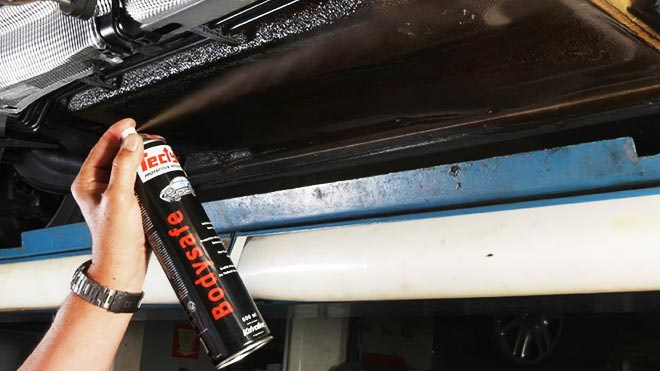
The cost of a bottle of 400 ml is 700 rubles. The tool is also sold in 1-kilogram jars; it is recommended to apply Tectyl anticorrosive agent not with a brush, but with the help of a compressor.
Anticorrosive for the bottom of MERCASOL
The MERCASOL pool cleaner is produced by the Swedish company Auson. The composition is considered the most durable, the manufacturer guarantees metal protection against corrosion for up to 8 years, subject to the application technology. The cost is 700 rubles per 1 liter.
The line has separate compositions for processing the bottom, wheel arches, internal surfaces. For the background, the MERCASOL 3 brand is used, the composition is made of bitumen with the addition of wax.

For internal surfaces, it is recommended to use anticorrosive from the Noxudol-700 series of the same manufacturer. The tool is made taking into account environmental standards and does not cause allergic reactions due to the absence of solvents.
Atikor Krown
A feature of Krown oil-based anticorrosive agent is the ability to process the body immediately after washing, without waiting for the car to dry completely. The composition is most often used for internal parts, the product does not corrode paint, rubber, plastic and provides fast protection of hidden cavities.
Krown 40 series is used for outdoor work, when applied to rust, the product forms a protective film of 0,5 mm, thus completely preserving the center of corrosion. The cost of a 0,5 liter aerosol can starts from 650 rubles.
Anticorrosive universal LIQUI MOLY
LIQUI MOLY bitumen anticorrosive for the bottom of the car is considered the best option in terms of price / quality ratio. The composition includes an inhibitor, a solvent, a synthetic resin base and bitumen. After hardening, an elastic film remains on the surface, which maximally protects the surface from the effects of salts, moisture and is resistant to mechanical damage.

Complete drying of the anti-corrosion coating occurs within 12 hours, work can be carried out in a humid room at an air temperature of +3.
What is the difference between mastic for thresholds
For external thresholds and the bottom of the car, it is recommended to use putty. The material is classified according to the composition of the components, the most common are:
- bitumen-polymer;
- rubber-bitumen;
- epoxy resin.
Epoxy putty exhibits the greatest anti-corrosion effect, the main disadvantage of which is instability at low temperatures. At a level below 100 C, the composition may crack.
Drivers prefer to use bituminous mastic, which is easy to apply with a brush yourself. The average service life of the composition is 100 km.
Professional locksmiths recommend using the Antigravity anti-corrosion compound for processing thresholds, which, after application, is painted with a suitable paint. Putty process the bottom, arches and trunk floor. Window sills treated with putty look ugly, you have to use overlays.
How to treat the bottom of the car with mastic at home
Anti-corrosion treatment of the bottom of the car requires preparation and strict adherence to the instructions; when choosing a composition, take into account:
- Putty "Liquid plastic" is used as the main remedy for gravel damage and as an additional anti-corrosion protection.
- Rubber putty provides the greatest protection for the metal, the waterproofing of the bottom approaches 100%, thanks to its elasticity, the material easily penetrates into closed cavities.
- Bituminous mastic is applied in a layer up to 0,4 mm. In addition to protecting against corrosion, the material prevents gravel impact marks.
When self-spraying anticorrosive on the bottom, the following algorithm of work is used:
- The car must be processed inside at a temperature of +10 ... +25 degrees.
- It is necessary to apply protection slowly and in an even layer up to 2 mm. It will shrink as it dries.
- It is recommended to apply anticorrosive only on the treated surface, the rust must be cleaned, the metal must be sanded.
- Do not allow the product to come into contact with the exhaust system, engine, brakes or moving parts of the vehicle.
- Protection must be applied in the following order: bottom, cavities, wheel arches. At home, using a sprayer and a soft brush, anticorrosive is applied to hidden cavities in the bottom.
Although the manufacturer claims that their rust remover dries in 12 hours, auto mechanics do not recommend running the car for at least 24 hours after treatment.
The independent process of applying the product does not require additional skills, but if there is no convenient shaft or elevator in the garage, it is recommended to contact the service.
